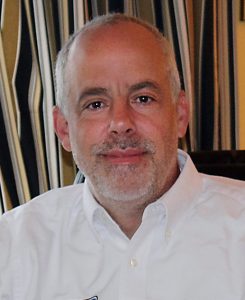
You recently launched your Aerospace Compliance Software. How does it work?
Aerospace Compliance Software is a brainchild of ours. The software eliminates human errors of our certification process. It’s a self-checking system. It’s based on various aerospace pyrometry specifications as well as customized for those customers that may not need to meet the aerospace requirements but also their own requirements.
When we do pyrometry services for customers out in the field — either calibrations or uniformity surveys or system accuracy testing — all our paperwork is manually done. Obviously, when you have human intervention with it, mistakes can happen. We have done a lot on our certification process currently that are preventing most mistakes, but at the end of the day, mistakes can still occur. When you have these aerospace audits such as Nadcap or an aerospace prime like Boeing coming in, they may not know exactly the service that you’re providing for the customer, but they’ll see you forgot to “cross the T” or “dot the I.”
What makes your software unique to what’s been available?
The one big unique thing is that we’re going to capture not only AMS 2750 revision F requirements, but we’re also going to capture other pyrometry specifications. There are some limitations on other things in the market right now that only do AMS 2750. But, for instance, a supplier or customer may not need to follow 2750, but they have to follow GE specifications. They have their own pyrometry requirements. Our system will be able to, just by a checkbox, say, “OK, I need to meet this standard,” and it’ll automatically pull in the accept-reject criteria for that particular aerospace standard. I think from that standpoint, we’ll be a lot further ahead of the game because there are other aerospace pyrometry requirements out there that we can follow.
The software can validate the accuracy for AMS-2750F, GE P10TF1, PWA MCLF40, and CQI-9 specifications, to name a few. What is important about those particular specs?
GE is probably one of the bigger pyrometry specifications out there; 10 years ago, they wrote their own pyrometry requirements that don’t follow AMS 2750 at all. So there would be other aerospace specs, like Pratt and Whitney, the PWA MCLF 40. Basically it says you adopt everything in 2750 except for a few other items. Boeing has actually three different pyrometry specifications, depending on what Boeing sandbox you’re playing in.
We’re going to make sure that the system covers anything that’s out there from a standpoint of an aerospace product.
Can the software be customized for other requirements?
We don’t just provide pyrometry services. We are involved with calibrations of temperature, humidity, vacuum sensors for autoclaves and pressure vessels, and vacuum system calibration for vacuum furnaces, which don’t really dovetail into AMS 2750 or any other pyrometry spec. The customer then might drive some internal requirements for temperature humidity instrumentation, for instance. We might go into a clean room, and they have a temperature humidity gauge. It’s not governed by any specifications. So, they’ll set what their requirements are going to be, and we’ll be able to say, “OK, you need to be ±3 percent humidity on your gauge and ±2° on your temperature aspect.” We can customize that portion of it.
Has the software made the customization easier than the way it had been done previously?
Yeah. It’s very user-friendly. The one thing that we’re planning on doing is having these dashboards of our customers’ equipment, and it’ll always keep everything in line. When a customer does have an audit, their records are going to be right there at their fingertips. No more pulling up a piece of paper and handing it to the auditor for review. They’re going to be able to sit at a computer and just say, “OK, here’s the calibration reports for X amount of years, and here’s your uniformity surveys.” And it’s all going to be tied into this customer’s equipment.
What has been the industry reaction to the software?
We’ve gotten a positive buzz. We did do a soft rollout at the Furnaces North America trade show. We were hoping to have everything ready to roll, and then of course, with developing any kind of software, there are always little glitches along the way. We have rolled out our calibration module, which is ready to be released, and we’ve done some beta testing on it and used some live customers on it, and it’s working out the way we need it to. Our TUS module is our next module coming out. We’re aiming for the end of March on that one. And then shortly behind that will be our SAT module. We have many clients who know our intentions of the software, and they like the fact that it’s a self-checking system, so that human element goes out of the equation. We’re excited about the rollout along with a lot of our clients.
MORE INFO www.atp-cal.com
























